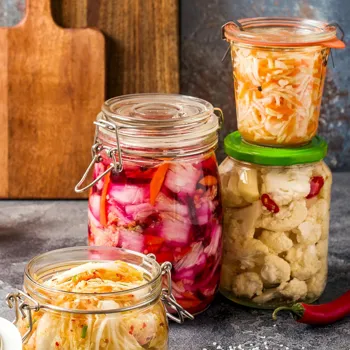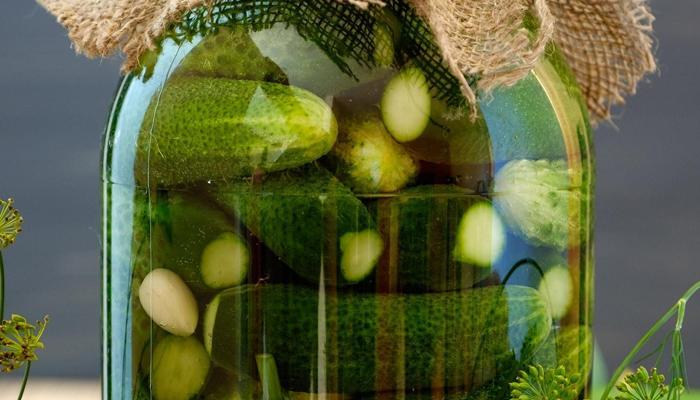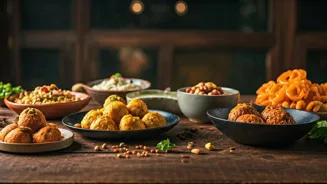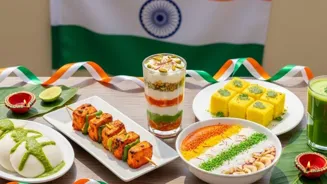Unveiling the Science of Fermentation in Indian Cuisine - A Journey into the World of Flavors and Health. Read on for a tantalizing exploration!
From the tangy kick of homemade pickles to the refreshing
zest of kanji, fermentation is a time-honored tradition deeply embedded in Indian culinary practices. But beyond the delicious flavors, there lies a fascinating world of science at play.

Fermentation, at its core, is a metabolic process where microorganisms like bacteria, yeast, and mold convert carbohydrates, such as sugars and starch, into alcohol, acids, or gases. This process not only alters the taste and texture of food but also enhances its nutritional value and preservation.
Fermentation transforms food for flavor and digestibility using microorganisms
The magic of fermentation lies in the microscopic organisms that drive the transformation. These tiny workhorses, often invisible to the naked eye, break down complex food molecules into simpler, more digestible forms.

For example, bacteria convert lactose in milk into lactic acid during yogurt production, giving it the characteristic sour taste and thicker consistency.
Similarly, in the case of idli and dosa batter, yeast ferments the rice and lentils, producing carbon dioxide that makes the batter rise and creates a light, fluffy texture. These transformations not only enhance the flavour but also contribute to improved digestibility of the food.
Understanding the specific microorganisms involved and their metabolic pathways allows us to fine-tune the fermentation process for optimal results.
This knowledge also opens doors for innovation, allowing us to explore new food combinations and develop novel fermented products with enhanced nutritional profiles and unique flavours.
Indian pickles showcase the benefits of fermentation for flavor and health
Indian pickles, or achaar, are a prime example of the power of fermentation. Traditionally, pickles are made by submerging fruits or vegetables in a brine solution, which creates an environment conducive for lactic acid bacteria to thrive.

These bacteria ferment the sugars present in the vegetables, producing lactic acid, which acts as a natural preservative and imparts the distinctive sour taste.
The addition of spices not only enhances the flavor but also possesses antimicrobial properties, further inhibiting the growth of undesirable microorganisms. The fermentation process also breaks down complex carbohydrates and proteins, making the nutrients in the vegetables more bioavailable.
This means our bodies can absorb and utilize them more efficiently. Furthermore, the lactic acid produced during fermentation promotes the growth of beneficial bacteria in the gut, contributing to improved digestion and overall gut health.
Fermented foods boost nutrition and gut health with probiotics
The benefits of fermented foods extend beyond just taste and preservation. Fermentation enhances the nutritional profile of food by increasing the levels of certain vitamins, minerals, and antioxidants.
For instance, the fermentation of soybeans into tempeh increases the bioavailability of iron and other minerals. Fermented foods are also rich in probiotics, beneficial bacteria that reside in the gut and play a crucial role in maintaining a healthy digestive system.
These probiotics can help improve digestion, boost immunity, and even reduce the risk of certain diseases. The specific health benefits of fermented foods vary depending on the type of food and the microorganisms involved in the fermentation process.
However, incorporating a variety of fermented foods into your diet can provide a wide range of health benefits.
India's rich fermented foods offer diverse flavors and cultural heritage
Beyond pickles, India boasts a rich tapestry of fermented foods, each with its unique flavor profile and cultural significance. Dhokla, a popular Gujarati snack, is made from fermented batter of rice and lentils, resulting in a light and spongy texture.
Kanji, a traditional fermented drink, is made from black carrots, mustard seeds, and spices, offering a refreshing and probiotic-rich beverage. Bhatura, a deep-fried bread, owes its fluffy texture to the fermentation process.
These are just a few examples of the diverse array of fermented foods that are integral to Indian cuisine. Exploring these traditional foods not only introduces us to new flavors but also connects us to our cultural heritage and the wisdom of generations past.
Proper hygiene key for safe fermentation; choose homemade for health benefits
While fermentation is generally safe, it is essential to follow proper hygiene and safety precautions to prevent the growth of harmful microorganisms.
Using clean utensils, maintaining appropriate salinity levels, and storing fermented foods in a cool, dark place are crucial for ensuring food safety and preventing spoilage. It's also important to note that not all fermented foods are created equal.
Commercially produced fermented foods may not contain the same levels of probiotics as traditionally fermented foods. Therefore, when possible, opt for homemade or locally sourced fermented foods to maximize the health benefits.
By understanding the science behind fermentation and following best practices, we can safely enjoy the delicious and nutritious benefits of this ancient food preservation technique.
AI Generated Content. Glance/InMobi shall have no liability for the content











